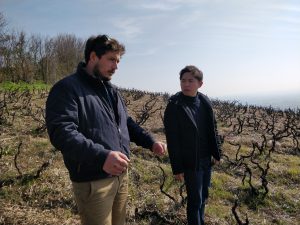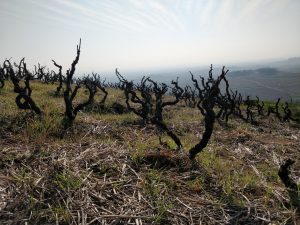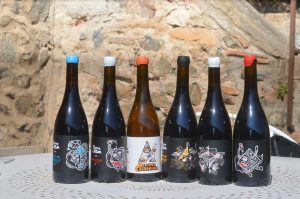A Beyond-Organic Visit with Pierre Cotton
As organic farming has increasingly become an obvious choice for young winemakers looking to produce excellent wines, many of these producers are looking for ways to grow better grapes and better manage the environment in and around their vineyards. A small but growing group of winemakers are going “beyond organic” by using “no-till” farming.

Instead of plowing to control the competition between grass and vines, these growers choose to plant complementary cover crops between rows and allow them to grow together, usually rolling the plants flat before harvest to allow access to the vines and return all the nutrients to the soil.
During a recent visit with Pierre Cotton in the Beaujolais, I casually asked if he had any thoughts on “no till” farming. It turns out that he had spent the better part of the last two years pondering it with his partner Marine Bonnet, who holds a master’s degree in agronomy. In addition to learning which specific cover crops were suited to each parcel, they enacted an ambitious agroforestry goal to incorporate a mix of shade trees and hedges in their vineyards, with a dual goal of creating wilderness corridors for local wildlife and shade for the vineyards on south-facing slope that are frequently warmer than they would like.

Additionally, they have a new vineyard called La Chappelle at the top of the Côte de Brouilly, which is planted to very old vines that are planted “en foule,” that is to say, not in orderly rows. Because of this and the steep slope, the parcel has to be worked entirely by hand, so they are testing out straw cover in this vineyard as a way of managing the grass.

Is this the future of organic farming? We’ll see in a few years how the plan works out, but it’s certainly exciting and inspiring to see the thoughtfulness and hard work that Pierre Cotton and Marine Bonnet put into their work that goes far beyond just producing great bottles of wine.



